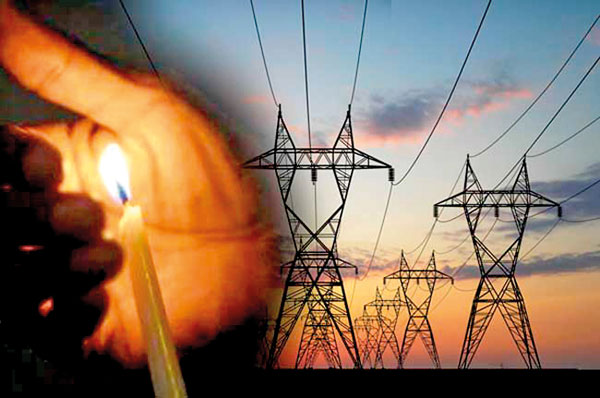Sunday Times 2
Blackouts: when will the CEB get its act together?
View(s):By M. N. Susantha Perera, Ph.D.
Last Sunday’s total system failure was one more grim reminder that the country’s electricity supply infrastructure has a long way to go before it can reach the level of resilience and sustainability required of a modern power grid to make the transition to a green, clean, and sustainable energy future.
The “Sunny Sunday” blackout has given rise to renewed discussions on the operational problems arising from a large percentage of variable renewable energy (VRE) in a small system like ours, especially when the system load is low. Many, including some wannabe power system experts who suddenly came out of the woodworks, were quick to provide alternative theories on what triggered the blackout—perhaps in defence of the poor monkey who became the subject of numerous discussions and memes that spread rapidly on social media.
The many problems plaguing Sri Lanka’s electricity grid run deeper than these simple (and simplistic) explanations and political rhetoric that everyone seems to enjoy for a while and then forgets until the next blackout.

Sunday’s blackout was proof that the country’s transmission network is incapable of handling the variable renewable energy capacity already connected to it
To modernise the grid to make it ready for the “clean energy future” requires careful planning and substantial investments. The hard truth is that it will take years and a few billion dollars in investment before Sri Lanka’s National Grid can achieve this status. To be sure, our transmission network employs state-of-the-art technology and equipment sourced from top-notch manufacturers in the world, save for a few old transmission circuits, whose badly needed rehabilitation has not been considered a top priority by CEB planners for many years. The CEB also has skilled and knowledgeable engineers and technical personnel trained to manage the operation and maintenance of its grid.
Be that as it may, Sunday’s blackout was proof that the country’s transmission network is incapable of handling the VRE capacity already connected to it, let alone meeting ambitious targets proposed in government policy statements.
Is it because the CEB has failed to invest enough in its transmission and distribution infrastructure that it is facing the type of operational problems that allegedly led to the total system failure on Sunday? Yes and no. The reality is that the CEB has invested billions of rupees in its transmission and distribution infrastructure, with concessionary financing received from development agencies such as ADB, JICA and other foreign governments during the past 20 years or so.
More to the point, these loan packages invariably had as the main objective the development and/or integration of renewable energy sources like micro-hydro, solar and wind. The long titles given to these loan packages included words like “clean energy,” “renewable energy,” or “green energy.”
Why is the grid far from ready to embrace the green, clean, and sustainable energy future people romanticise about, even after investing billions in the transmission infrastructure? The answer to this bewildering question perhaps lies in the manner in which these investments have been planned and implemented under numerous foreign-funded projects.
Prioritised projects
The CEB’s long-term transmission plans are often based on a set of “prioritised projects” that do not necessarily reflect the most crucial needs on the ground. This mismatch between the plan and the actual requirements has often resulted in investments in projects that are unnecessary or can be delayed and these precious dollars not going into real priorities. There is a growing list of transmission substations and lines constructed under different foreign-funded projects that have been proven to be unnecessary investments, or in the best case, investments that could have been delayed for much later.
The Mannar-Vavuniya-Anuradhapura 220kV Transmission Line constructed under an ADB-funded project is a case in point. This is one of the few investments in the transmission infrastructure that has served to advance VRE integration. The CEB initially planned to construct a new 132kV transmission substation in Mannar and to connect it to the existing transmission network at Anuradhapura through Vavuniya.
Accordingly, the CEB awarded the substation contract to a reputed Korean contractor after following the long tender process but realised shortly thereafter that this facility was inadequate to accommodate the full identified wind potential in the area. The project was then hastily upgraded to 220kV and awarded to the original contractor after spending more than a year on the process. As the contractor had already mobilised, the CEB ended up paying close to Rs. 150 million in liquidated damages and other costs. Further, the Mannar-Vavuniya section of the transmission line (constructed under a separate contract) had been designed with a lower capacity, creating a serious bottleneck through the entire length of the line. The CEB is now spending millions to upgrade this section to install a special type of conductor.
The Ambalangoda-Galle 132 kV Transmission Line, which was constructed at a cost of nearly Rs. 1.7 billion in 2017, is another example of bad planning. This line was proposed to alleviate the severe capacity problems in the CEB’s southern Sri Lanka transmission network, which has existed for almost 30 years. When the line was constructed under an ADB-funded project, it could not be operated and had to be kept disconnected from one end to avoid serious operational problems. The CEB’s proposal thereafter to construct a 220kV transmission line connecting Polpitiya to Hambantota too has not helped since another critical component, the 220kV transmission line bringing power from Kotmale to Polpitiya, has been under construction for almost 10 years.
There are also investments in transmission substation capacity well over the projected demand to be served by those facilities. The most striking example would be the Deniyaya substation where CEB installed three power transformers, although the demand at this facility could be met with a single transformer for many years (even with the 100% redundancy requirement, three transformers could not have been justified).
At the time these plans were made and executed, the substation at Pannala had reached its capacity, and the CEB distribution division in the area had been forced to stop providing bulk supplies. This fact escaped the CEB planners’ attention, and eventually CEB was forced to remove a transformer from Deniyaya, which had been kept idle for many years, and install it at Pannala.
Even when projects are awarded after much delay, their completion takes years—beyond the anticipated date of completion. No one is held responsible for these delays, which cost the country and the CEB dearly. For example, the government pays the loan provider substantial commitment fees even before a project contract is awarded.This is not reflected in the CEB’s balance sheet. It is normal for the CEB to take 2-3 years just to prepare project tender documents. Even after contracts are awarded and fund disbursement starts, the costs keep piling up, and no one is held responsible for delays. Numerous progress meetings at all levels are merely question-and-answer sessions, which hardly lead to any real action.
The CEB’s statement that its present network cannot handle the rooftop capacity on a bright sunny day is an admission that the massive investments it has made towards improving and expanding its transmission and distribution infrastructure over nearly two decades have failed to produce an electricity infrastructure that can readily accommodate the increasing additions of VRE.
Surely, if these investments were planned and managed carefully with a genuine desire towards this goal, without merely paying lip service to the idea of VRE integration, the CEB today would have a robust network ready for a happy renewable future. Such a system would remove the anxiety system operators undergo on a “Sunny Sunday” looking at their screens and thinking whether a depressed monkey will decide in the next minute to go on a suicide mission and jump on a live busbar of a substation somewhere—and contemplating the nightmare of restoring power supply once that happens.
Forgotten probes
Historically, the standard response when a nationwide power outage happens has been to investigate the incident by an independent committee of experts and give much publicity to the report and its findings. The investigations generally pinpoint what went wrong and identify those responsible as well. Then the ministry forwards the report to the Board of the CEB, instructing it to implement the recommendations therein. Thereafter, the report is usually forgotten until the next blackout happens. For example, there were not less than six blackouts during the past 10 years, including those in 2015, 2016 (two incidents), 2020 and 2021 (two incidents). The investigation report in each case examined and documented the incident in detail. There was no serious follow-up by the CEB, the ministry, or the government, and no one has been held accountable. There is no reason to believe things will be different this time, notwithstanding the massive publicity generated by the dead monkey found in the vicinity of the transmission substation at Panadura.
All that was discussed here (and much more that was not discussed) is emblematic of the serious lack of responsibility and the pathetic status of governance in the country’s electricity industry, of which the CEB is the biggest player. Unless this root cause is addressed, all the discussions, arguments and reports will not help in any meaningful way.

